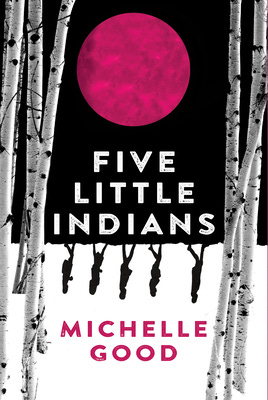Gutter Child
by Jael Richardson
2021
To attempt to summarize the plot of this riveting and stimulating novel would be to spoil many of its unexpected turns. Needless-to-say, this is one of the more unusual coming of age novels you are likely to encounter, filled with many gut wrenching twists and events.
The action takes place in an imagined world, unfortunately not so different from our own. “Unfortunately,” because the defining features of this world look a lot like South African apartheid and Canada’s residential school system. The country is divided into Mainland and Gutter. The Mainlanders arrived from away many years earlier. There was a war. The original population was displaced into an area now knows as the Gutter.
The protagonist, Elimina, was born in the Gutter, but she was raised on the Mainland, part of a social experiment. After her adoptive mother dies, she is sent to a school for Gutter children, an academy whose purpose is to train the next generation of servants and workers for Mainland families and industry. Underlying all of this is the dept each Gutter child assumes at birth, which must be paid off before any Gutter-born person is “free.”
That’s a lot of “set up,” and clearly the context here is critique of colonialism and racism, plus wealth, class and capitalism, and surely more as well. But page by page, it is Elimina the reader cares about. What will happen to her? How will she make it through the trash compactor of these horrible interlocking social systems. I’m not telling. No spoilers here. She’s a fine hero, that is all.
Five Little Indians
by Michelle Good
2020
Giving this five stars not because it is rich in literary complexity but because it is a perfect marriage of tone, style and content—and rich in empathy. “We were only little kids,” one character says late in the book. This is a fact returned to, repeatedly, as the story follows the lives of five “Little Indians” from the dark horrors of residential school on through their struggles, triumphs and—for some—deaths.
Canada’s residential school system is integrated into the founding of the country, as post Confederation (1867) governments (and churches) tried to “kill the Indian in the child,” in notorious words often attributed to Duncan Campbell Scott, deputy superintendent of the Department of Indian Affairs (and a one-time nationally celebrated poet). The last residential school in Canada closed in 1996.
In this novel, the action takes place between the 1950s, when the children are taken from their families as young as age six, and continues to the beginnings of the class action lawsuit against the government and churches brought forward by the survivors of the schools. Part of the settlement of that lawsuit was the establishment of the Truth and Reconciliation Commission, which released its landmark report in 2015.
The historical record is now easily available to anyone willing to do the research. What this novel provides is stories of lives profoundly altered by childhood experiences in one particular school in British Columbia. The sexual abuse and corporal punishment violence is muted in this telling. The book is not graphic in detail, but its understated tone does not minimize the long-term damage of these deep bruising events.
These little kids remain little kids for a long, long time, as victims of childhood trauma are wont to do. As readers, we witness them experience the counter-culture of the 1960s, the rise of the American Indian Movement, the battle of Wounded Knee, deep poverty, addictions, racism, institutional neglect, intergenerational dysfunction, family breakdown, and then late in the book a turn to Indigenous cultural revival, a new collective awareness, a consolidation of “the story,” and one hesitates to even say hope.
Station Eleven
by Emily St. John Mandel
2014
This is a TV show, limited series, now, but I haven’t seen it. I read this on my Kindle in 2019. I haven’t been a big sci-fi-slash-speculative fiction reader, so I approached this with not a lot of enthusiasm, but it gets two thumbs up from me. Is a global pandemic plausible? Hell, yes. Now we know.
Except the virus in this book is waaaaaay more dangerous than COVID. It kills nearly everyone—and quickly. That’s how we start, nearly everyone dies. Yes, it’s a similar premise to Cormac McCarthy’s The Road, but St. John Mandel tells a story with more community. Bit by bit people find each other and work together.
Complications arise as the plot moves towards climax. The world post disaster is a shimmering echo of the before time. Art, music, theatre, an attempt to archive objects persist in the new afterworld. So does conspiracy, paranoia and authoritarian visions of totalizing control. Even after the apocalypse there’s new violent end-time visionaries? Yep. Keep your loved ones close.
Set in Toronto!




